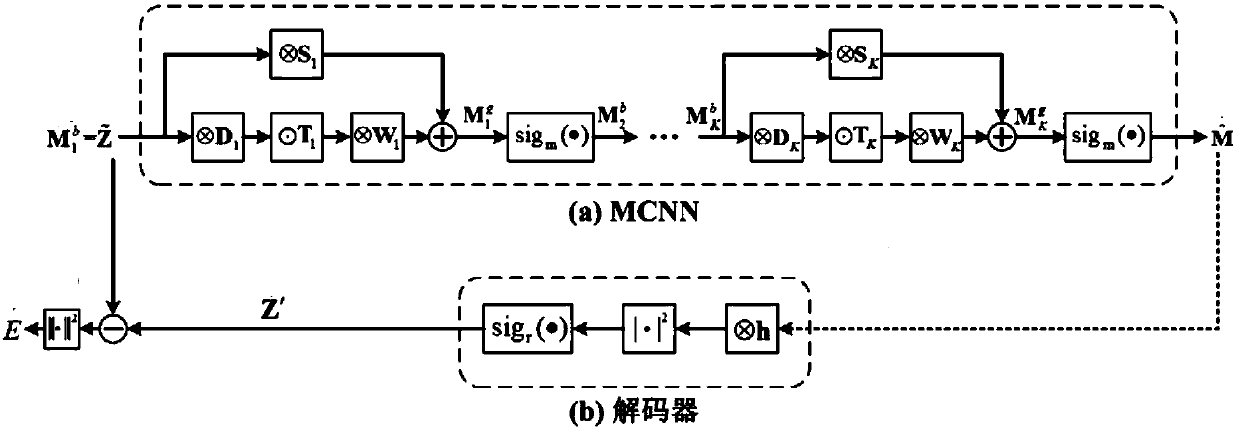Computational lithography method for model-driven convolution neural network
A convolutional neural network and model-driven technology, applied in the field of computational imaging, can solve problems such as high computational complexity, affecting the imaging quality of the lithography system, and large convergence errors
- Summary
- Abstract
- Description
- Claims
- Application Information
AI Technical Summary
Problems solved by technology
Method used
Image
Examples
Embodiment Construction
[0084] The present invention will be described in detail below with reference to the accompanying drawings and embodiments.
[0085] Please refer to figure 1 , figure 1 A computational lithography method based on a model-driven convolutional neural network provided by an embodiment of the present invention is shown, and the technical solution of the method is as follows:
[0086] S1. Expand and truncate the gradient iterative algorithm to construct a model-driven convolutional neural network MCNN.
[0087] The input data of MCNN is the circuit layout to be optimized, and the output data of MCNN is the mask pattern optimized by optical proximity effect correction OPC.
[0088] S2. Build a decoder corresponding to MCNN based on the imaging model of the lithography system.
[0089] The input data of the decoder is the OPC-optimized mask pattern, and the output data of the decoder is the imaging of the lithography system corresponding to the OPC-optimized mask pattern.
[0090...
PUM
 Login to View More
Login to View More Abstract
Description
Claims
Application Information
 Login to View More
Login to View More - R&D
- Intellectual Property
- Life Sciences
- Materials
- Tech Scout
- Unparalleled Data Quality
- Higher Quality Content
- 60% Fewer Hallucinations
Browse by: Latest US Patents, China's latest patents, Technical Efficacy Thesaurus, Application Domain, Technology Topic, Popular Technical Reports.
© 2025 PatSnap. All rights reserved.Legal|Privacy policy|Modern Slavery Act Transparency Statement|Sitemap|About US| Contact US: help@patsnap.com



